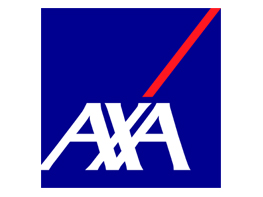Why Isn’t Your Company’s ESG Response Up to Par? Kroll Shares How to Best Design Your Procedures

As the spotlight on various environmental and social challenges only continues to grow, it’s imperative for organizations to respond accordingly. One effective and clear way to achieve this goal is through regulated environmental, social and governance (ESG) standards.
ESG standards and regulations used to be considered a particularly niche segment of the industry. Its specificity accounted for its lack of a presence within many organizations. Its importance has only been seen and amplified within the last five years.
But how can organizations ensure that the implementation of ESG will be a worthwhile opportunity?
That’s exactly what Kroll looked to address in its webinar “ESG – Opportunity or Minefield? Is Your Company Getting It Right?”
Comprised of a panel of four, speakers included Karen Kosiba Edwards, partner at Boyden; Barbara Krumsiek, corporate board director; Pamela Parizek, managing director, Kroll; and Betsy Blumenthal, managing director, Kroll.
Everything to Know About the ESG Wave
ESG follows environmental, social and governance standards across an industry and within organizations themselves.
From an organizational perspective, the environmental aspect focuses on the environmental impact of a company; social looks at the organization’s social impact; and governance addresses stakeholder interests.
ESG has experienced a significant uptick in terms of its relevance and organizations have taken note. A poll cited during the webinar reported that 82% of participants confirmed that their organizations have made commitments to enhancing ESG improvements.
The relevance of ESG can be attributed to four drivers:
- More accessibility to research and materials on the effects of corporate performance
- More pressure being placed on companies by institutional investors to incorporate ESG risk into their work
- A generational push and social awareness by younger members of the workforce
- Regulatory and government involvement, which include disclosure guidelines and requirements
In addition, the pandemic has served as a catalyst for many people’s social values to alter. This can also be seen as a contributor to the rise and push for ESG regulations.
Constructing an ESG Blueprint
If organizations are looking to follow a step-by-step guide for ESG incorporation, they’ll be hard pressed to find one.
The panelists stressed that ESG regulations are not a one-size-fits-all approach, and organizations must be willing to export significant time and effort to construct an ESG plan that works for them.
From the regulatory perspective, several factors need to be taken into consideration as more and more organizations introduce their own ESG initiatives.
For one, regulators are constantly evaluating organizations for any ESG misconduct or violation, only emphasizing the importance of having these regulations in place.
A component that still proves tricky is the lack of uniformed disclosure regulations for U.S. organizations.
While they are not yet mandatory, those organizations that do decide to disclose their ESG practices are susceptible to regulatory checks. In Europe, the industry is seeing more of a push towards uniformed disclosures, which will allow investors to compare ESG standards across various sectors.
While these standards are not yet in place, panelists agreed that organizations can expect a swift implementation of industry-wide regulations.
From an organizational side, how can ESG standards be formed and maintained in a successful way?
In recent years, this responsibility has started to fall heavily on boards of directors. From a social perspective, this was especially seen after the rise of the #MeToo movement, and the reputational damage brought on to organizations following inappropriate behavior by executives.
Boards have been forced to ask themselves how they oversee culture and ESG factors and if their responses suffice.
Corporate culture and ESG initiatives go hand in hand, so it’s imperative for boards to proactively work to provide standards that best serve their organization. In an industry that is heavily male dominated like the insurance industry, guidance on both diversity and gender inclusion was at the forefront.
An effective way to ensure that an organization’s ESG standards remain a top priority is having CEOs include maintaining a strong corporate culture as a main goal for any given year.
Making Strides, But Still Progress to Be Made
ESG regulatory conversations have become a loud dialogue over recent years, but there is still room for the conversation to continue.
A recent study by NYU’s Stern Center for Sustainable Business found that about only 30% of Fortune 100 Board Members have ESG credentials. Within that 30%, only 6% have credible environmental experience.
ESG regulations can serve as a prime opportunity for organizations, but only if they’re equipped to construct them correctly. Without the experience and diversity needed to ensure these initiatives thrive in organizations, they won’t be used to their fullest potential. &










